Research - (2021) Volume 9, Issue 5
Prevalence of Microalbuminuria in Hypertension Patients and Its Correlation with the Severity of Hypertension and End Organ Damage
Papaiah Nirmal Pudota and R Vedamanickam*
*Correspondence: R Vedamanickam, Department of General Medicine, Sree Balaji Medical College and Hospital Affiliated to Bharath Institute of Higher Education and Research, India, Email:
Abstract
To detect the prevalence of Microalbuminuria in Hypertensive patients Correlation between Microalbuminuria and age, gender in Essential hypertensive patients Relationship between microalbuminuria and increasing age in hypertensive patients To Substantiate the Involvement of Various Organ systems in these patients and Study relationship of Microalbuminuria with the severity of hypertension and Target organ damage The prevalence of Microalbuminuria is increased with the age of the patient, increases with the duration and severity of hypertension, increases in frequency in overweight individuals. Microalbuminuria correlates positively with the stage of hypertension. Increased frequency of Microalbuminuria is found to be present in stage 3 and stage 4, so increases with severity. And, positively correlates with the cardiovascular dysfunction.
Keywords
Hypertension, Microalbuminuria, Immunoassay, Kidney damage.
Introduction
Hypertension is one of the world's most important diseases most common affecting people around the world. It’s often called the silent killer. Hypertension is attributable to 10.8% of all deaths in India. The incidence of Hypertension is 20 to 40% in urban areas and 12 to 17 % in rural areas of India. One in three Indian adults has high blood pressure. In 2016, hypertension resulted in 1.63 million deaths in India compared to 0.78 million in 1990 (+ 108 percent). Hypertension-induced disease burden (DALYs) increased from 21 million in 1990 to 39 million in 2016. Because of the chronic disease burden, it’s an important challenge. Over several decades of research and patient education along with effort of health bodies lead to decreased morbidity and mortality rates. Hypertension is modifiable risk factor which means if detected early and controlled diseases such as Coronary artery disease, End stage renal diseases and peripheral vascular diseases can be controlled. Therefore, assessment of early damage has become a key element in evaluating Hypertensive patients [1-4].
According to the latest kidney foundation guidelines. Microalbuminuria is defined as 30- 300mg/day. Its divided into three stages A1(urine AE(albumin excretion)<30mg/day or urine ACR(urine albumin to creatinine ratio)<30mg/g creatinine),Stage A2 ,Urine AE 30- 300mg/day or u ACR=30-300mg/g of creatinine, and stage A3 as urine AE>300mg/day or Urine ACR >300mg/g creatinine.MA is used as a routine marker of kidney damage for diagnosing CKD at eGFR level above 60ml/min/1/73m2. Kaplan, et al. had described a radio- immunoassay for measuring small concentrations of albumin in the urine, well below the detection threshold of the then existing methods. Chobanian et al. highlighted the relation between microalbuminuria and the severity of hypertension Microalbuminuria became common after a 14-year longitudinal study was published in 1982 that showed that microalbuminuria predicted an increased risk of kidney disease and early mortality in type 1 diabetes.3 The predictive power of microalbuminuria for renal and cardiovascular disease morbidity and mortality was subsequently confirmed in type 2 diabetes, arterial hypertension and in the general population. Microalbuminuria can represent an increased renal endothelial permeability and is an easily measured marker of somewhat diffuse endothelial dysfunction, low inflammation, and the burden of vascular disease [5,6].
So, Microalbuminuria serves as a prognostic marker for Cardiovascular and renal disease in hypertensive patients. Studies have shown an ongoing association of Microalbuminuria with cardiovascular events and kidney lesions, That Is higher the microalbuminuria, Higher the risk of developing these conditions. In this context, a study was conducted among patients attending Sree Balaji Medical College and Hospital, Chennai. This study aims to screen for the presence of microalbuminuria in essential hypertensive patients and its correlation with the end organ damage changes [7].
Materials and Methods
Study population
This study is conducted among 100 Hypertensive (essential hypertension). Attending general medicine department outpatient clinic and ward at Sree Balaji Medical College and Hospital, Chennai Collaborative Departments: Department of Cardiology, Biochemistry, Ophthalmology, Radiology.
Study period
July 2018 to August 2019.
Ethical concern
The project was approved by the ethical committee.
Study type
Cross Sectional study.
Sample size
100 cases.
Inclusion criteria
✓ Hypertensive patients (Both male and female) with BP>140/90mmhg.
✓ Age more than 30 years.
Exclusion criteria
✓ Patients with renal disease.
✓ Diabetes mellitus.
✓ Chronic heart failure.
✓ Ischemic Heart Disease.
✓ Cerbero vascular disease.
✓ Patients with urinary tract infections.
✓ Pregnancy.
✓ .00000Patients with obstructive uropathy.
Methodology
Patients who were admitted and attending the general medicine department who fulfilled the inclusion criteria were included in the study. Patients fulfilling the exclusion criteria were excluded from the study. Investigations were sent and Correlations were made accordingly.
Data collections
A designed proforma was used to take a detailed history, general and systemic examination of CVS, Respiratory, GIT(Gastrointestinal), CNS (Central Nervous) systems of patients diagnosed with essential hypertension.
Results
Frequency of MA in 100 essential hypertensive patients is found to be 30% results mentioned in Table 1. 42% of the population belong to the age group 61 and above .9% belong to the age group less than 40 years (Figure 1). P value 0.373 non statistically significant Microalbuminuria was found to be present in 30% of the patients belonging to the age group 51-60 years and 33.3 % of the patients belonging to the age group 61- 70% and 13.3 % above 70 years. However, no microalbuminuria was found in the age group up to 40 years (Figure 2). Frequency of in 100 hypertensive patients…66 % are male and 34 % are female. Hypertension is a major problem for both men and women, but men tend to develop at earlier age. Among individuals older than 60-70 years, women are more likely to have hypertension and to have CVS events compared to men (Table 2). MA was found to be present in 46.7% of the patients IRREGULARLY treated and 40 % of the patients with NO treatment with anti-hypertensives and only in 13 % of the patients REGULARLY treated with antihypertensives (Figure 3). Microalbuminuria was found to be present in 30% of the patients with overweight (Figure 4). Comparison between lipid profile an MA is mentioned in Table 3. LVH Is noted to be seen in 29 out of the 100 patients.22 of the 29 patients i.e., 73.3% had MA (Figure 5). P Value <0.01, Highly Significant Suggests A Highly Positive Correlation Between micro albuminuria and end organ damage (Figure 6).
| Microalbuminuria | Frequency | Percent |
|---|---|---|
| A | 70 | 70 |
| P | 30 | 30 |
| Total | 100 | 100 |
Table 1: Frequency of MA in 100 essential hypertensive patients is found to be 30%.
| Sex | Frequency | Percent |
|---|---|---|
| Female | 34 | 34 |
| Male | 66 | 66 |
| Total | 100 | 100 |
Table 2: Distribution among sex frequency.
| Lipid profile | Count % | MA | Total | |
|---|---|---|---|---|
| A | P | |||
| F | Count | 56 | 7 | 63 |
| % | 80.00% | 23.30% | 63.00% | |
| NF | Count | 14 | 7 | 37 |
| % | 20.00% | 76.70% | 37.00% | |
| Total | Count | 70 | 30 | 100 |
| % | 100.00% | 100.00% | 100.00% | |
| P Value 0.0005 Highly significant. | ||||
Table 3: Comparison between lipid profile and MA.
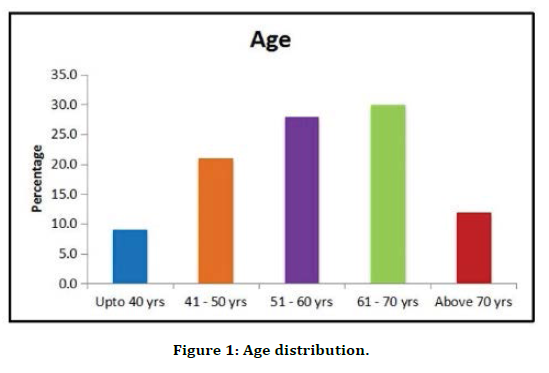
Figure 1. Age distribution.
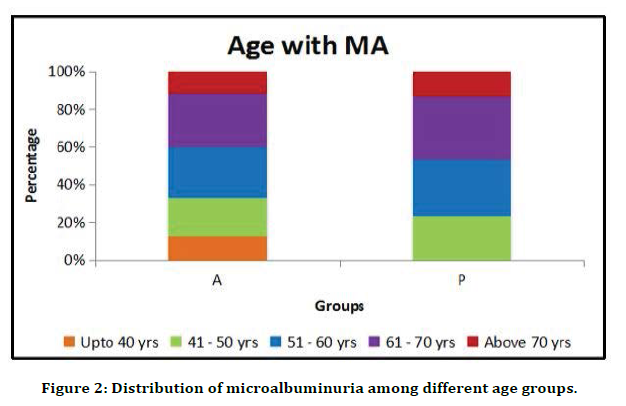
Figure 2. Distribution of microalbuminuria among different age groups.
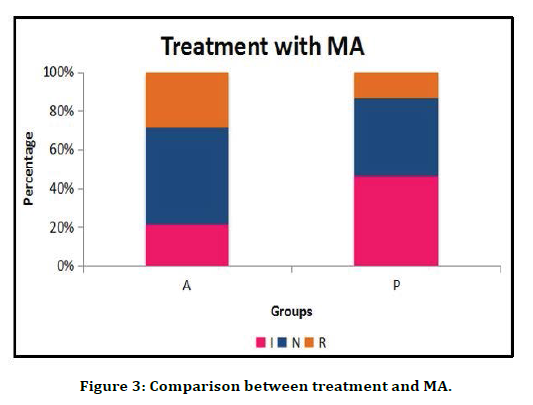
Figure 3. Comparison between treatment and MA.
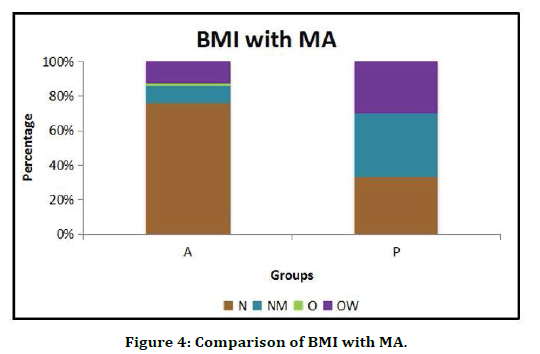
Figure 4. Comparison of BMI with MA.
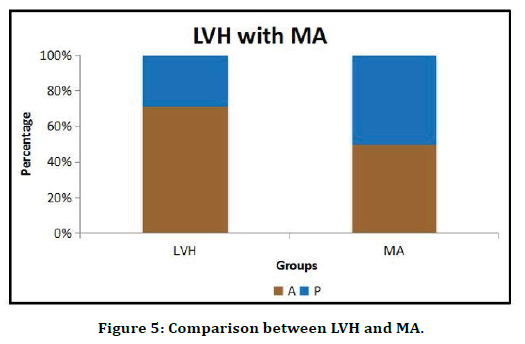
Figure 5. Comparison between LVH and MA.
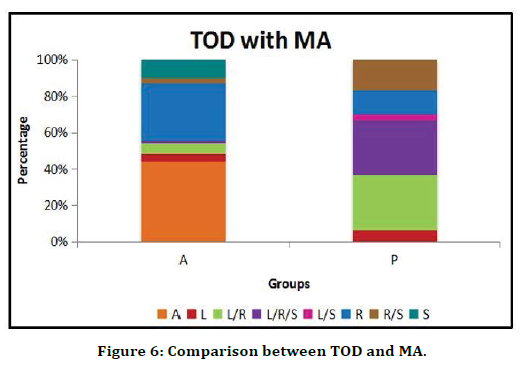
Figure 6. Comparison between TOD and MA.
Discussion
Hypertension is one of the most global diseases causing burden worldwide and is one of the most common cause of morbidity and mortality. Along with diabetes, it is the most common disease affecting the end organs of the body. Hypertension affects almost every organ in the body. To detect the end organ damage, patients usually will not present with symptoms unless severely affected. Mostly they remain asymptomatic .so to know how we can detect the damage early.so that we can prevent the complications of hypertension.100 patients with essential hypertension presenting to our hospital were looked for age, sex, duration of hypertension, their personal habits, weight, general examination, ECG lipid profile and were screened for the end organ damages mainly LVH and retinopathy correlating with the respective departments. Patients were included based on the inclusive and exclusion criteria as described above [8,9]. The prevalence in the 100 patients included for the study was 30. Microalbuminuria in the 100 essential hypertensive patients was found to be in 30. There had been previous studies like the Sabharwal K which showed a prevalence of 34% (60 out of 174 patients).In 1990,Stefan published study on the prevalence of hypertensive patients which was around 35 %.Varma study showed prevalence of 25 %. There is difference in prevalence in these studies owing to the different methods to evaluate MA, different times of urine collection [10].
In the study conducted among the 100 hypertensives, there was no significant difference in microalbuminuria among males and females, where 21 out of 45 males are more affected, and 9 out of 25 females are affected with p value 0. 650.In a study conducted In Europe (NORWAY) a stronger association was found between MA and mortality in men than in women. In other study, Campesevito showed a prevalence of 32 % in males and 28 % in females. This study showed a slightly more prevalence in men. In another study, Baldani et al. done MAGIC study where it was observed that microalbuminuria was more found in males. Stalin NJ, Kaushik K conducted a study where they found out that prevalence of microalbuminuria among hypertensives was 56%. This study shows gender per se does not pose a risk to developing MA [11].
This study shows that, persons with age group above 50-55 years with hypertension should be screened for microalbuminuria and early detection and treatment to control hypertension to avoid further target organ damage to avoid complications. In our study, risk factors such as smokers and tobacco chewers did not show statistical significance with MA. In the study, out of 25 nonsmokers,12 were found out to have MA and out of 65 smokers 18 were found out to have MA. This could be explained as to variation in the history taking of the patient and because of small sample size [12,13].
In the study done comparing the duration of hypertension and MA, out of 100 cases, 30 were found to have MA. out of the 30 cases with MA,13 patients had a duration of hypertension between 6 to 10 years and 6 patients had duration of hypertension more than 10 years, and only 5 out of 40 patients with duration up to 5 years had MA. This study shows that, with the duration of hypertension increasing, the prevalence of microalbuminuria is more which is statistically highly significant (p value<0.01) [14].
In the present study,29 patients had a history of irregular treatment for hypertension out of which 14 had micro albuminuria and out of 24 with regular treatment, only 4 had micro albuminuria. Study shows that, along with increased duration, patients with h/o Irregular treatment had more Microalbuminuria compared to patients who are getting regularly treated (p <0.05). Baldani, et al. in the MAGIC study had observed similar findings. Hence this study shows a positive correlation between the microalbuminuria and prevalence of LVH (p value <0.01). Hypertensive patients with MA were 11 times more likely to develop LVH than patients with normal UAE. Several studies showed the similar findings. Tsiousfus et al in 2002 in their study observed that 21 % of the 250 had LVH. Monofred et al in 2003 (Life study) observed a higher prevalence of MA 30% vs 9 % in patients with LVH with p <0. 001. Baldani et al. observed that patients with MA were 20 times more likely to have both LVH with p <0.01 in a study conducted in 280 patients [11,15-17].
In our study with hypertensive patients, patients with end organ damage changes such as LVH Retinopathy and stroke had a higher percentage of Microalbuminuria. Out of 10 cases with LVH/Retinopathy/Stroke 9 of them had microalbuminuria. 31 cases without end organ damage had no Microalbuminuria.9 out of 13 patients with LVH and retinopathy had MA. P value of <0.01. CT brain was abnormal in 28 patients. Prevalence of MA was higher among the patients with stroke (p value 0.024). MA is a cause for generalized atherosclerosis and can involve carotid vessels. There are studies which show correlation between MA and carotid artery disease without symptoms. Baldani et al, done studies in 279 patients out of which, urine albumin excretion was positively associated with MA. Patients with MA were 20 times more likely to develop carotid intima media thickness [18].
Conclusion
Hypertension is one of the most common global burden diseases affecting humans Along with diabetes, it is one of the most common causes of CVS mortality and morbidity. Therefore, proper screening and assessment is required to identify patients at risk for these conditions. Prevalence of MA differs among populations, based on the demographics, risk factors, habits, and the various techniques used to identify MA. Microalbuminuria is a cause for generalized atherosclerosis and increased renal endothelial permeability and therefore considered an early marker of diffuse endothelial dysfunction.
The prevalence of Microalbuminuria is increased with the age of the patient, increases with the duration and severity of hypertension, increases in frequency in overweight individuals. Microalbuminuria correlates positively with the stage of hypertension. Increased frequency of Microalbuminuria is found to be present in stage 3 and stage 4, so increases with severity. And positively correlates with the cardiovascular dysfunction.
Increased frequency is found in the patients having LVH (left ventricular hypertrophy). which denotes patients can be screened for ECHO if they have Microalbuminuria Increased prevalence of Microalbuminuria with individuals having an abnormal lipid profile Fundus is important to be observed in patients with MA as they were found to be higher in patients with stage 2 ,3 and stage 4 retinopathy12.Early detection of Microalbuminuria among by screening in the hypertensive patients can help to prevent the end organ damage by maintaining strict control of hypertension, so it also used as a prognostic marker.
Funding
No funding sources.
Ethical Approval
The study was approved by the Institutional Ethics Committee.
Conflict of Interest
The authors declare no conflict of interest.
Acknowledgments
The encouragement and support from Bharath University, Chennai, is gratefully acknowledged. For provided the laboratory facilities to carry out the research work.
References
- https://accessmedicine.mhmedical.com/content.aspx?bookid=1130§ionid=79720773
- Hurst textbook of cardiology. 12th Edn. 1551-1560
- https://jamanetwork.com/journals/jamainternalmedicine/article-abstract/624075
- Nelson's textbook of pediatrics. 18th Edn. Vol II 1989-1995.
- Kaplan N. Systemic hypertension: Mechanisms and diagnosis, in Braunwalds Heart Disease, 7th Edn. Philadelphia, Saunders, 2005.
- Chobanian AV, Bakris GL, Black HR, et al. Seventh report of the joint national committee on prevention, detection, evaluation, and treatment of high blood pressure. Hypertension 2003; 42:1206-1252.
- Harrison’s Textbook of medicine 16th Edn. Vol 2, Mc-Graw Hill 1468-1469.
- Wilson PW, D'Agostino RB, Sullivan L, et al. Overweight and obesity as determinants of cardiovascular risk: The Framingham experience. Arch Internal Med 2002; 162:1867-1872.
- Sabharwal RK, Parduman Singh. Incidence of microalbuminuria in hypertensive patients. Indian J Clin Biochem 2008; 23.
- Bigazzi R, Bianchi S, Campese VM, et al Prevalence of microalbuminuria in a large population of patients with mild to moderate essential hypertension. Nephron 1992; 61:94-97.
- Baldani GD, Bigzzi R, Nenci R. Microalbuminuria in essential HT. J Nephrol 1997; 216-218.
- Solfrid R., Jostein H, Hans H, et al. Microalbuminuria and all-cause mortality in treated hypertensive individuals. The Nord Trondelag Health Study (HUNT Norway). Circulation 2003; 108:2783-9.
- Michael Bjorn Sheley, Rosetta Pederson. Microalbuminuria and essential hypertension. Current Opinion Nephrol Hypertension 1999; 8:359-363.
- Bigazzi R, Bianchi S, Von C. Prevalence of microalbuminuria in large population with mild-moderate essential HT. Nephron 1992; 61:94-97.
- Pedrinelli R, Dell'Omo G, Di Bello V, et al. Low-Grade inflammation and microalbuminuria in HT. Arterioscler Thromb Vasc Biol 2004; 24:2414.
- Sarnak MJ, Levey AS, Schoolwerth AC, et al. Kidney disease as a risk factor for development of cardiovascular disease: A statement from the American heart association councils on kidney in cardiovascular disease, high blood pressure research, clinical cardiology, and epidemiology and prevention. Circulation 2003; 108:2154-2169.
- Agrawal B, Berger A, Wolf K, et al. Microalbuminuria screening by reagent strip predicts cardiovascular risk in hypertension. J Hypertension 1996; 14:223-228.
- de Farai Stamm AMN, Meiners G. Systemic hypertension and microalbuminuria. Arq Bras Cardiol 2000; 89.
Author Info
Papaiah Nirmal Pudota and R Vedamanickam*
Department of General Medicine, Sree Balaji Medical College and Hospital Affiliated to Bharath Institute of Higher Education and Research, Chennai, Tamil Nadu, IndiaCitation: Papaiah Nirmal Pudota, R Vedamanickam, Prevalence of Microalbuminuria in Hypertension Patients and Its Correlation with the Severity of Hypertension and End Organ Damage, J Res Med Dent Sci, 2021, 9 (5):227-233
Received: 29-Mar-2021 Accepted: 21-May-2021
